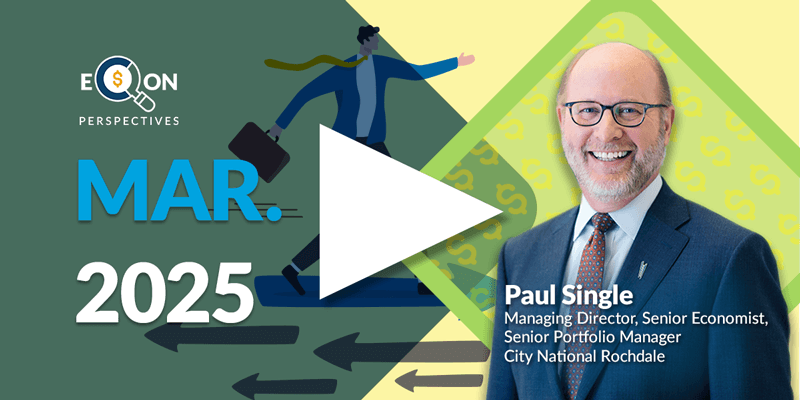-
Market Perspectives
Greater Uncertainty Spooks Markets
October 2023
- Filename
- Market Perspectives OCTOBER 2023.pdf
- Format
- application/pdf
TRANSCRIPT
It's been an eventful October. Let's check in on how the financial markets are performing, review the increasing uncertainties at home and abroad, and determine whether changes to our outlook and recommended portfolio allocations are in order.
Most major financial markets are down month-to-date, as resurgent yields, dysfunction in Washington, the Israel-Hamas war, and other outside stresses raise investor uncertainty.
U.S. large cap stocks have fared relatively well. The S&P 500 is down about 1.5% month-to-date, while small cap stocks (considered to be more exposed to economic uncertainty) are down more than 6%, hitting a 12-month low, and international stocks are down over 3% month-to-date.
Earnings season is in full swing, and so far, results are largely in line with expectations. In the aggregate, companies are reporting earnings of 6.6% above consensus and estimates, and that are equal to the 10-year average.
However, we are hearing more concerns about the economy from company guidance.
Some of the tech titans have reported. Microsoft's results were impressive; Meta's and Netflix's were good; Alphabet's and Tesla's were not so great; and as of filming, we're still awaiting Amazon's report. Apple and NVIDIA do not report until November.
Most major bond indices are down as well, as yields have risen.
Chart 1: 1:40 — The 10-year U.S. Treasury Yield briefly touched 5% intraday, the highest level since July 2007 (and quite a move from the April lows this year of around 3.3%).
The third quarter revealed unexpected economic strength. We saw positive surprises in retail sales and industrial production, housing starts increase. This strength, together with concerns about quantitative tightening and treasury issuance (especially looking into next year), contributed to the unexpected rise in the 10-year yield. It was not due to inflation expectations.
Let's shift to the increasing uncertainties at home and overseas.
Chart 2: 2:26 — The U.S. House Speakership debacle has resurrected the topic of potential government shutdown. The likelihood of this occurring has increased. The current stopgap spending bill ends November 17.
While the current noise and rancor may produce elevated short-term market volatility, the historical impacts to GDP of government shutdowns have been modest and temporary, with the broad market recovering somewhat quickly as focus shifts back to fundamentals.
Chart 3: 2:49 — Moving abroad, geopolitical tensions and uncertainty have risen. The Israel-Hamas war has shifted our geopolitical risk outlook further in the negative direction, and has added a third area of concern.
As you can see here, each area of uncertainty carries varying degrees of economic risk. Reflexively, many think of oil volatility and its potential impact on the U.S. economy. After all, this is an impact we have experienced historically.
Chart 4: 3:16 — But over the past four decades, the U.S. economy has become less dependent on oil for various fundamental economic reasons. Further, the stock market's longer-term reaction is ultimately more impacted by the strength or weakness of the underlying economic fundamentals. When the fundamentals are strong, markets tend to be more resilient.
So, what's the impact to our outlook and recommended positioning for portfolios?
We do think the risks have increased, and we advise taking a continued cautious approach and maintaining current allocations. It is not yet time to increase portfolio risk. Volatility in either stocks or bonds may create buying opportunities, increase stock allocations, and/or extend bond duration.
Corporate earnings will likely follow the economy in 2024 — that is, weaker in the first half and rebounding in the second half, with our base-case scenario still calling for a mild recession in the first half of 2024. The current environment reaffirms our preference for U.S. equities over European and Asian stocks, and for large cap over small cap stocks.
Uncertainty can provide investment opportunities, and we plan to add to equity allocations when risk/reward ratios warrant. Most likely, this will occur in anticipation of recovery, which would be demonstrated by corporate profit growth in the second half of next year.
Stay Informed.
Get our Insights delivered straight to your inbox.
Put our insights to work for you.
If you have a client with more than $1 million in investable assets and want to find out about the benefits of our intelligently personalized portfolio management, speak with an investment consultant near you today.
If you’re a high-net-worth client who's interested in adding an experienced investment manager to your financial team, learn more about working with us here.



